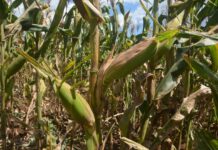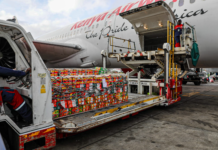A new research has revealed that sub-Saharan African countries can grow enough grains like maize, wheat and millet to feed its population by 2050 without any further expansion of agricultural land.
Conducted by Netherland’s Wageningen University & Research (WUR) in collaboration with other universities and research institutes, the study however adds that substantial changes in the way farming is carried out will have to made.
Currently, sub-Saharan Africa produces over 92 percent of their five-grain demand relying on imports for the rest.
According to the study, the current yield increase of 20 kg per hectare is not enough to be self-sufficient by 2050 calling for radical changes.
The population is expected to almost double between now and 2050. Furthermore, people’s diet changes are expected to as they start earning more and the number of kilocalories consumed per person increases.
According to the study published in the journal PNSA radical changes in the agricultural management will be needed.
Key among the changes include improving seed and sowing timing, proper fertilisation and responsible application of crop protection.
“This a huge challenge now. Farmers often lack the money to buy the right tools and the knowledge on how to use them. You need to know when to sow, how much fertiliser is needed and how to control weeds, diseases and pests – without damaging the environment or the soil,” observed Martin van Ittersum, professor of Plant Production Systems at Wageningen University & Research, one of the authors of the study.
According to Dr. Ittersum, to achieve all this, countries need to provide infrastructure, sufficient and accessible credit, and invest in education and knowledge.
Key to the research was the extent to which Sub-Saharan Africa, which includes countries such as Ghana, Nigeria, Ethiopia and Kenya, can be self-sufficient in the production of five grains – maize, wheat, millet, rice and sorghum – by 2050.
These grains provide half of the region’s calorie requirements.
“Some countries are already completely self-sufficient for certain crops, but for the region as a whole, around 10 percent of the total consumption is still imported,” observed Dr. Van Ittersum.
Currently a lot of wheat comes from Ukraine and Russia, maize partly from North America and rice partly from Asia.
War and geo-political tensions in these regions have led to price hikes of wheat in sub-Saharan Africa.
In the study, the researchers looked at what is needed in each country and – in particular – for the region in 2050 when demand has doubled.
They studied the potential for yields based on soils, climatic conditions and climate change in the area.








